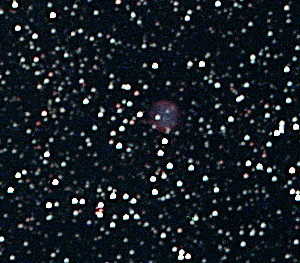



IC 2944 - Dragon Nebula
 Download Full Resolution (2048x1648) 2439KB
Download Full Resolution (2048x1648) 2439KB
'IC 2944 - Dragon Nebula'
IC 2944 - Dragon Nebula
[Public Domain] 13 May 2015 Dylan O'Donnell
CATEGORY : Astrophotography
10,980 others viewed this post.
This stunning emission nebula is usually referred to by it’s common name “Running Chicken Nebula” which is almost as uninspiring as the Seagull Nebula! I’m just going to call it the “Dragon Nebula” because I think the blue star looks like an eye, with horns above it, and the large red area the curled up body of the dragon. That’s my story and I’m sticking to it!
This is the first image I’ve taken over 2 separate nights for a total of 100 minutes, in 5 minute exposures. At f2 that makes it a very very deep exposure indeed. I’m very happy I managed to keep it so sharp with such long exposures, it’s quite difficult as even the slightest wind can ruin an exposure.
Can you see those little black flecks in the bright area? Those are not processing errors but little clumps of dust that are so compact and dense they are about to collapse in on themselves, ignite and turn into stars! That’s right, those little black dust spots are called “Bok Globules” and are basically star sperm. Sort of.
20 x 300s guided (Total integration time 100 minutes) over 2 nights before moonrise.
C 9.25″ SCT @ F2 (Hyperstar)
QHY12 CCD OSC @ -15C
Stacked in Nebulosity 4
UPDATE
—-
You know what astronomers do when it’s raining? Go back and reprocess old data 🙂 This is my “Lambda Cen” Nebula from 2 months ago with a better, more natural colour process. Photographed in RGB with the Celestron Edge HD, Hyperstar & QHY12 CCD.
I have a question for the smarter folks – Is that a tiny planetary nebula in the bottom right corner? I can’t ID it in astrometry.net, only the nearby bright stars. Can you see it? Am I going crazy?
 Download Full Resolution (2048x1648) 2439KB
Download Full Resolution (2048x1648) 2439KB










































